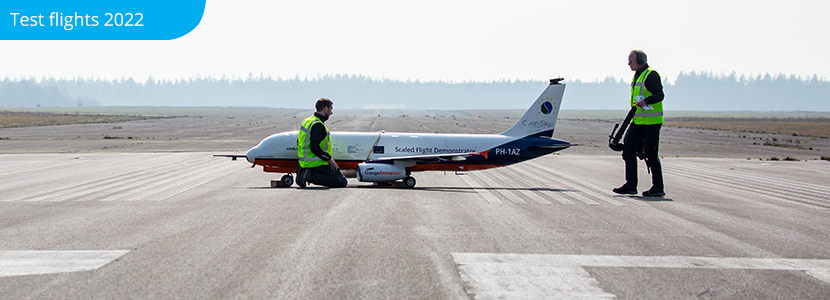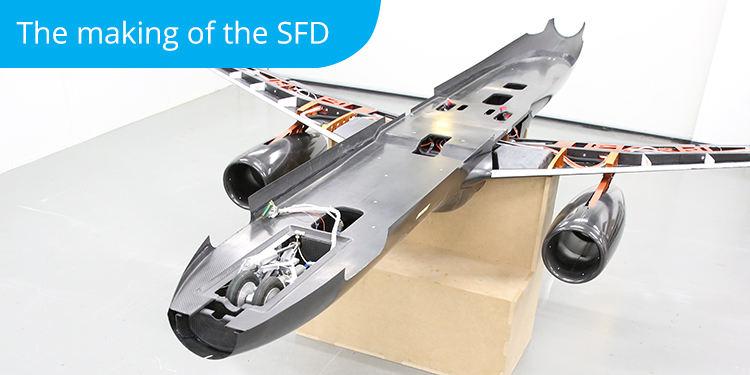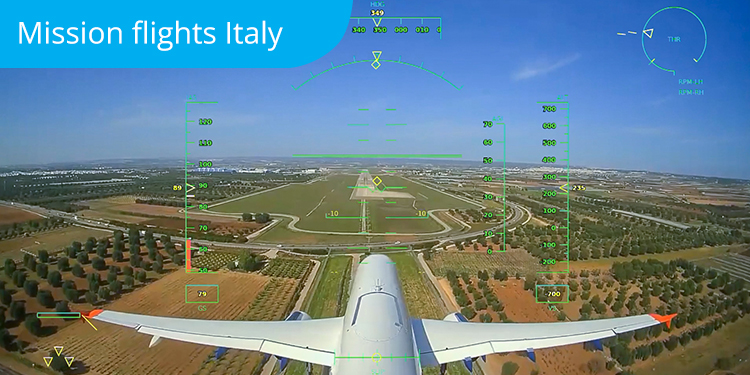How can you test a ground-breaking new aircraft design without first having to build a very expensive prototype? And how can you make measurements on new aircraft propulsion systems based on battery technology or hydrogen? A team of European research centres and industry consisting of ONERA, Royal NLR, CIRA and Airbus, have developed the Scaled Flight Demonstrator (SFD) and have completed its mission flight tests. The SFD is the large scale demonstrator of the European Clean Sky 2 research programme for future large passenger aircraft.
The project aims to validate scaled flight testing as a viable means to test and mature disruptive technologies that will enable significant reductions in energy consumption. This is important in our mission to accelerate more sustainable aviation. The idea is that a scale model can bridge the gap between the research and practical worlds: computer models can be made more accurate by practical testing using geometrically scaled-down models. The SFD, practically a scaled version of an Airbus A320, has been built by Royal NLR in cooperation with Orange Aerospace. The model has very accurate flight test instrumentation to carry out measurements during the wind tunnel and flight tests, recording more than 150 parameters.
Between 17 October and 31 October 2022, the SFD made 19 flights for a total of 8 flight hours, taking off from and landing at Aeroporto di Taranto-Grottaglie in Italy. During the missions, about 70 automated manoeuvers have been executed in order to carry out parameter identification. Prior to these mission flight tests, the maiden flight of the SFD took place on 30 March 2022 in Deelen (NL) and was operated by NLR.
In a second phase, the SFD will be reused to test and mature Distributed Electric Propulsion (DEP) for future large passenger aircraft. This DEP-SFD, featuring wings with 3 propellers each, planned to have its first flight in 2023. Unfortunately, on Thursday evening, May 11, the DEP-SDF has caught fire at the NLR parking lot in Amsterdam while conducting ground tests. The emergency services quickly arrived at the scene and there is no case of personal injury. NLR conducts this kind of necessary testing to make new technology available to aviation. At this time, we are unable to say anything about the cause of the fire. NLR will work with partners to identify the cause. As soon as there is more to report about the circumstances, we will ensure to post it here on our website.
Check news stories
The SFD is developed by a partnership of Airbus, NLR, ONERA, and CIRA, with support of Orange Aerospace.
This development has received funding from the Clean Sky 2 Joint Undertaking (JU) under the European Union’s Horizon 2020 research and innovation programme under grant agreements No 717183 and 945583.



